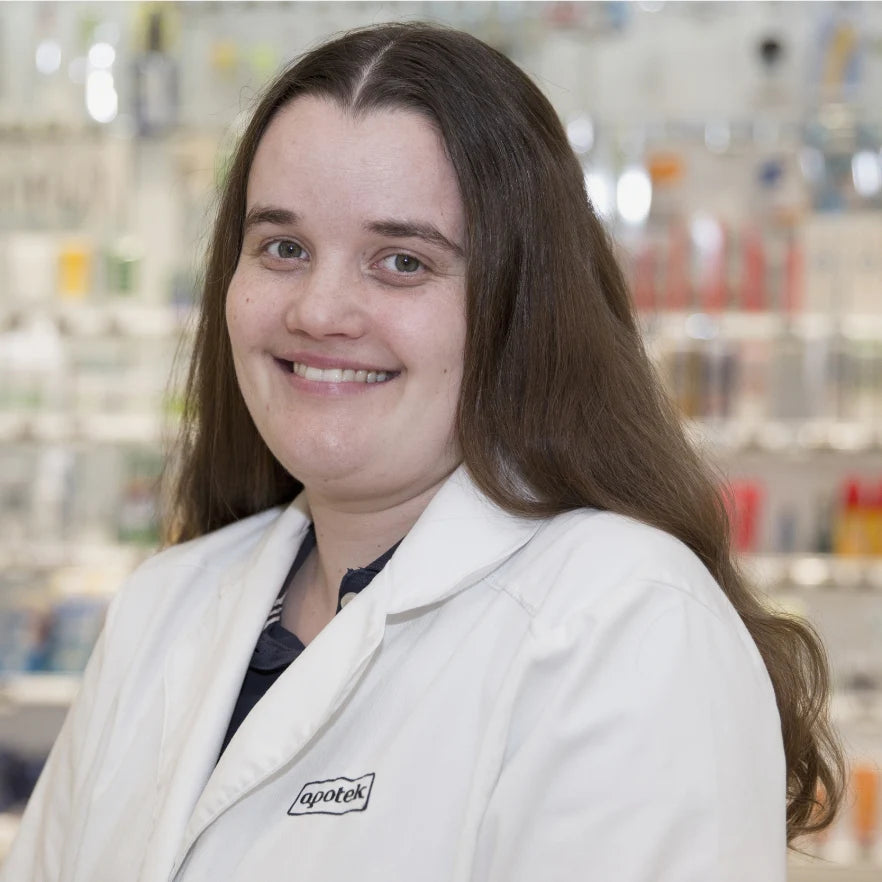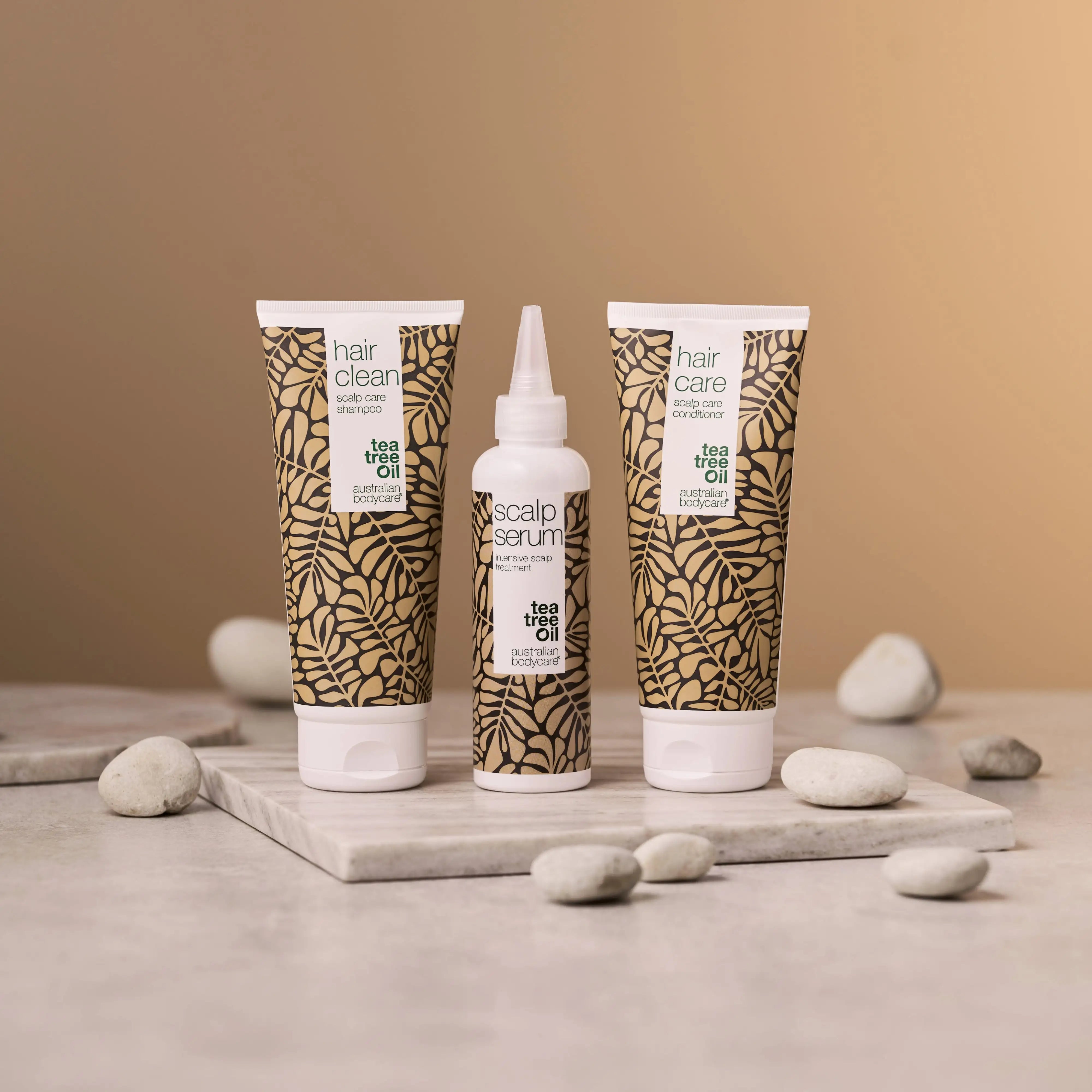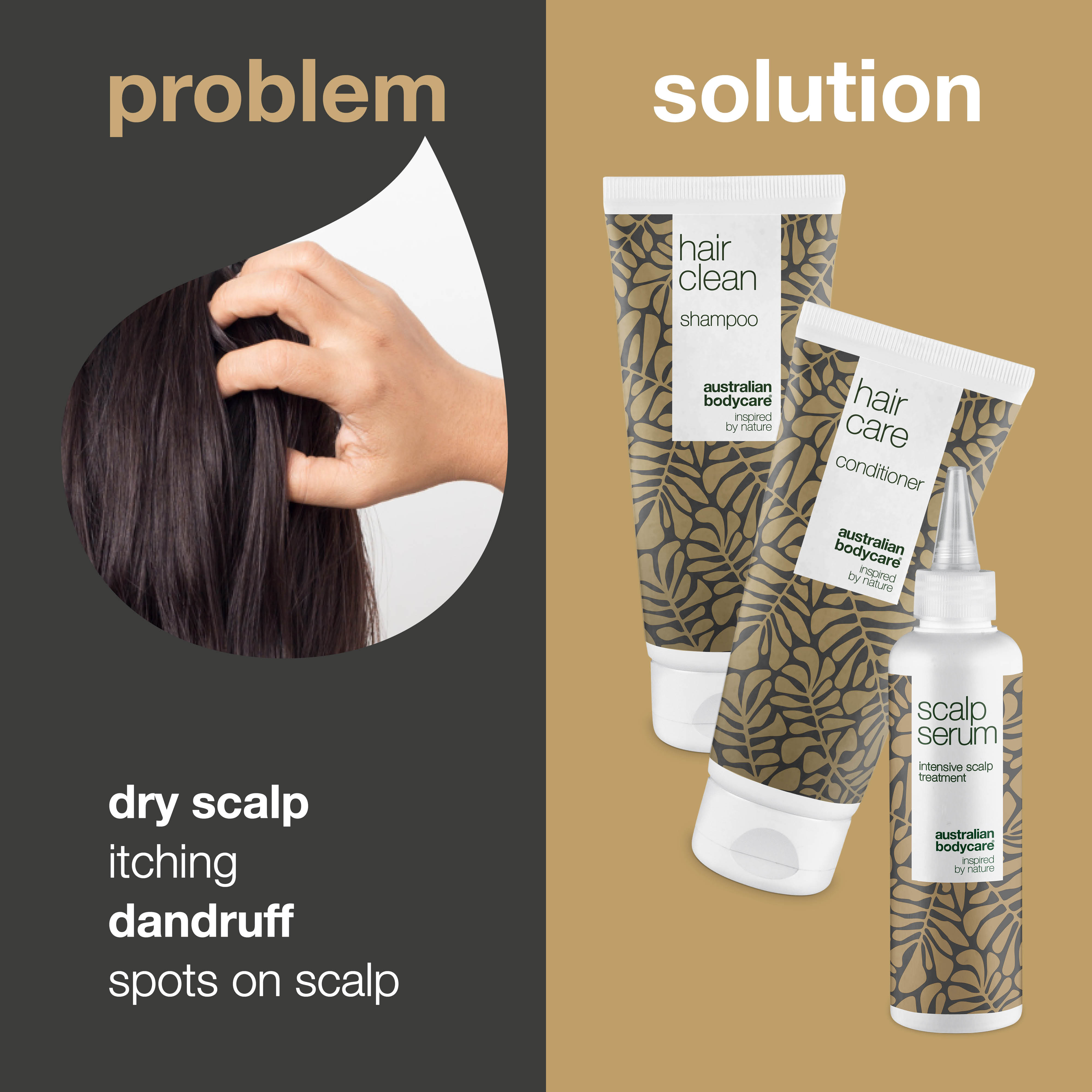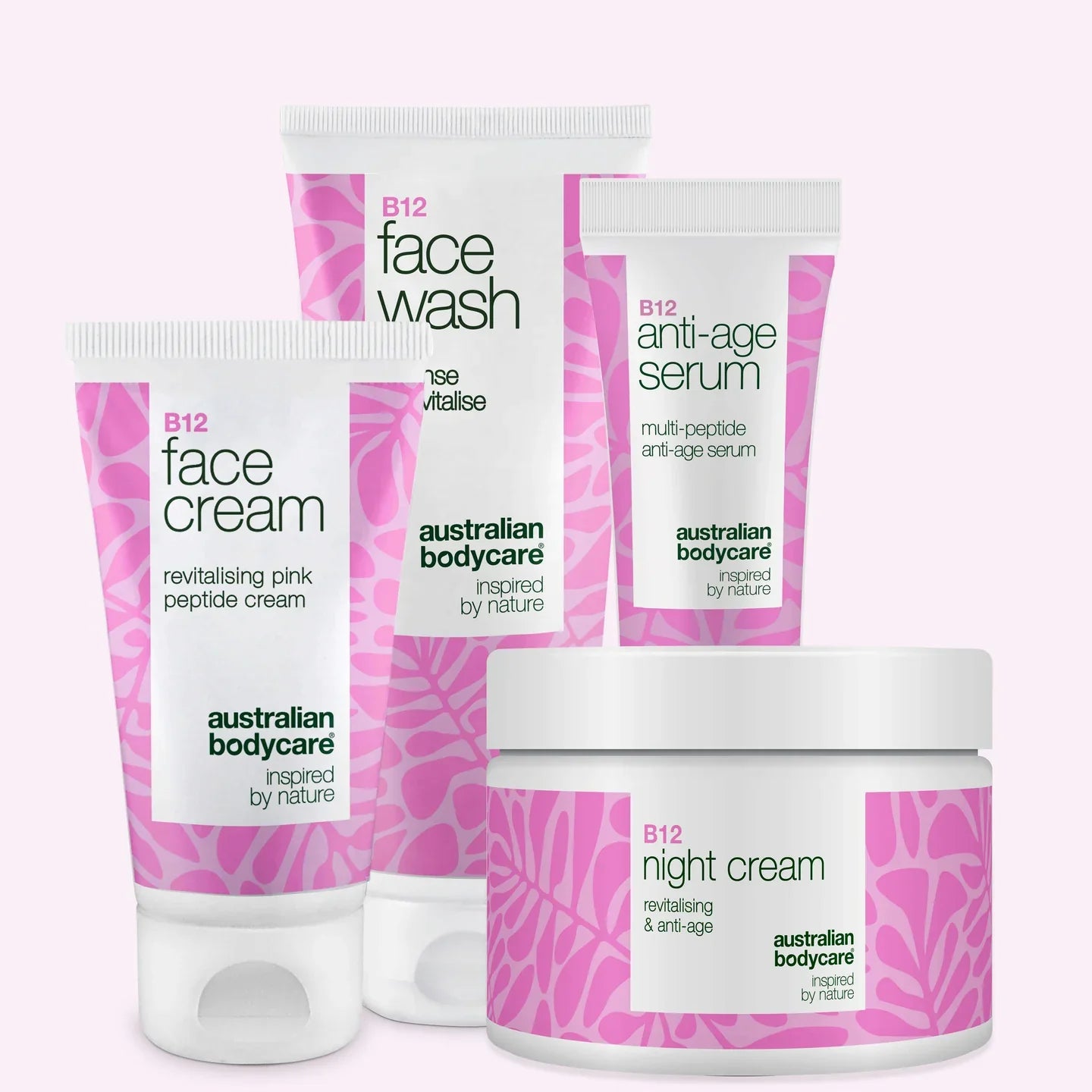How to Get Rid of Your Dandruff
Dandruff is a very common problem that many people suffer from; luckily dandruff is neither painful or dangerous. There are good ways to handle the condition; in this article you can find great advice for preventing and treating dandruff.
Jump directly to: How can you treat dandruff?
Table of contents
What is Dandruff?
Dandruff is the shedding of dead skin cells from the scalp. The typical signs of dandruff are small white dry flakes on the scalp that fall through your hair onto your back and shoulders.
When you have dandruff in your hair and scalp, it is in most cases due to an overgrowth of the Pityrosporum Ovale yeast. This fungus is found naturally in the scalp of all adults, in the same way, it is quite normal that we have other fungi on our body. It is only when an overgrowth of the fungi occurs that it will become a skin condition, such as dandruff.
Seborrheic dermatitis (eczema), psoriasis and ringworm, in some cases, could be the cause of dandruff. Certain diseases also make you prone to dandruff – example Parkinson’s.
Who Gets Dandruff?
Dandruff is a very common skin condition. So, if you are suffering from dandruff, it is very likely that you are not alone! However, if you have excessive dandruff and bothersome symptoms, it’s a good idea to have your doctor examine your scalp.
Regardless, dandruff is not dangerous, and it cannot infect other people, although the symptoms can be annoying.
Everyone can have trouble with dandruff, both men and women, but it usually starts early in puberty. Men tend to get dandruff more often than women.
Infants can get what is called cradle cap, which is considered a kind of dandruff. It causes yellowish, greasy skin crusts that form on the scalp.
What Does Dandruff Look and Feel Like?
Often you will recognise dandruff as the little white flakes that sprinkle down on the shoulders of your shirt, blouse or coat. The small white skin flakes are usually the most visible symptom of dandruff.
However, dandruff can also cause yellowish, sticky, greasy crusts of skin, or wounds in the scalp that itch.
When you have dandruff, whether it’s dry dandruff or greasy dandruff, you’ll typically find that the scalp itches and feels irritated. If there’s lots of itchiness, it is important that you first determine that you don’t have hair lice that require a different treatment.
Products containing Australian Tea Tree Oil are known to soothe irritation and itchiness on the scalp and counteract bacteria.
We can all have dandruff – the intensity, however, varies from person to person. If you suffer severely from dandruff, you may have seborrheic dermatitis, also known as a type of eczema. If you have dandruff on your scalp as well as redness and itchiness on your face, ears, eyebrows and even on your upper body, you may have eczema. Often it will be worse in the winter and better during the summer, when cold weather cannot dry out your skin.
Why Do You Get Dandruff?
The most common cause of dandruff is the yeast fungi Pityrosporum Ovale. We all have bacteria and fungi living on our bodies: Pityrosporum Ovale is just one type, a fungus found on the scalp of all adults. We therefore are all prone to having dandruff, to a greater or lesser degree. All that needs to happen is an overgrowth of the fungus.
Fungal Infections and Skin Diseases
The body usually manages to regulate that there is no overgrowth of the various fungal spores. The overgrowth can therefore be due to body imbalance, a reduced immune system, penicillin treatment, hormonal changes or anything else.
In some cases, there may be other causes of dandruff. It may be seborrheic dermatitis (eczema), which causes a lot of dandruff. Or it may be psoriasis, which can also cause dandruff. Ringworm, which is a fungal infection, can cause dandruff too. Finally, there are some diseases that can make you prone to dandruff and fungal infections in general as example Parkinson’s.
Harsh products, for example hair dye or a strong shampoo, can also cause dandruff.
Dry Scalp
Many people think that dandruff is just a symptom of a dry scalp, or that a dry scalp and dandruff are the same – probably because a dry scalp also causes itching. But they are not the same conditions. In most cases, as mentioned, the Pityrosporum Ovale fungus is responsible for dandruff.
If you stop washing your hair so often to get rid of your dry scalp, you may cause more dandruff problems. Good scalp hygiene is important because a clean and healthy scalp will prevent fungal overgrowth and dandruff. Thus, it is important to use the right shampoo.
A dry scalp lacks natural sebum and oils. A scalp with dandruff, on the other hand, typically has a higher production of sebum.
READ MORE: How to treat a dry scalp
When selecting a shampoo, remember to choose one according to the condition of your scalp, rather that the condition of your hair. There are many who don’t consider their scalp when buying and, for example, easily dry out an already dry and irritated scalp by using a shampoo to make their hair glossier. You may also have hair that seems dry and worn, perhaps because of a hair dryer, straighteners or curling iron, even though your scalp is greasy. If you use a shampoo for dry hair, you may risk your greasy scalp getting worse.
Greasy Hair
Greasy and oily hair is caused by an overproduction of sebum in the scalp. When you have dandruff, there is also often an overproduction of this sebum. Oily hair and dandruff can occur at the same time, but this is not always the case. You may have oily hair and dandruff, but you can also have dandruff without oily hair.
Dandruff, Sebum and Unclear Skin
Men tend to get dandruff more frequently than women because the production of the male sex hormone stimulates the production of sebum. High sebum production creates the perfect conditions for fungal overgrowth.
Increased sebum production is due to increased hormone production. It is therefore especially common in young people during puberty, and so you often see many teenagers affected by both unclear skin and dandruff at the same time.
How Can You Treat Dandruff?
Dandruff is fortunately a harmless disorder, and in most cases, it can easily be treated naturally.
Video: How to easily and efficiently treat dandruff.
How to use Scalp Cure for dandruff
Method:
- Apply Scalp Cure to your hair and scalp.
- Leave it to work for at least 5 minutes – or overnight if the dandruff is severe.
- Wash your hair with Hair Clean shampoo.
- Rinse thoroughly.
- Finish with a hair conditioner, if necessary.
Scalp Serum from Australian Bodycare is an effective and nourishing remedy for dandruff. Scalp Cure contains the natural ingredient Tea Tree Oil, which is antiseptic and good for soothing dandruff problems.
Use of Antidandruff Shampoo
If you have dandruff, you will usually be able to get rid of it by using a mild, skin-friendly shampoo. You can buy antidandruff shampoo in most supermarkets and beauty stores, where you usually buy your shampoo. If you have a more severe case of dandruff, you can use a shampoo that contains sulphur or zinc that fights against dandruff, bacteria and fungi. You can find these specialist shampoos at the pharmacy.
You can also get other types of scalp shampoos with natural ingredients. For example, you may want a shampoo containing Tea Tree Oil, which is known to be antibacterial. Read more about how to find the best shampoo for your scalp.
Ointment and Tablet Treatments
If your mild shampoos and antidandruff shampoos are ineffective, you may need a fungicidal treatment. This is prescribed by your doctor. It may be in the form of an ointment, cream or perhaps a stronger medicinal shampoo. Finally, if you have a very severe case of dandruff and nothing else is working, it may be necessary to take a fungicidal tablet treatment.
Vinegar, Coconut Oil and Other Natural Remedies
You can find many good natural remedies against dandruff. Some of them may work for you while others may have no effect whatsoever. The best thing to do is to try the remedy and see if it works for you.
Aloe Vera, Tea Tree Oil and Argan oil are natural remedies that work against a variety of problems and disorders, including dandruff. Tea Tree Oil counteracts bacteria and itching – and that’s why it’s well-suited to treating dandruff.
Vinegar is also said to have a positive effect on dandruff. The downside, however, is the strong smell. Coconut oil is healthier and more pleasant to use compared to many other natural remedies, and it is often referred to as a good balm for dandruff. Eggs and mayonnaise can also be used as dandruff antidotes. As dandruff is such a common problem, there are many different household remedies that people have used and vouch for that you can try.
Let Your Hair Breathe
The scalp needs plenty of air and light. It’s a good idea to avoid wearing a hat, if possible, so your scalp can breathe.
Many people find that they have less dandruff in the summer, when their hair and scalp get air and sun exposure, which seems to have a beneficial effect on dandruff. So, enjoy the sun with care and always wear SPF protection, because even though it’s good for dandruff, overexposure causes sunburn which may lead to a more serious condition.
Can You Prevent and Avoid Dandruff?
The best thing you can do to prevent dandruff is to keep your scalp clean and healthy. There is no guarantee that you will never have dandruff – and it can be difficult to fight against the factors that cause dandruff – but there are preventative steps you can take.
First and foremost, it’s important to choose a shampoo that suits your scalp. For example, if you use a shampoo that is too strong, it can dry your scalp. Then the scalp will begin to produce more sebum to moisten the dry skin – and a greasy scalp can create more dandruff.
Advice for Preventing Dandruff
There are several different practices you can incorporate into your everyday life to help prevent dandruff. These include the following:
- Wash your hair with a mild shampoo – and make sure you thoroughly rinse the shampoo from your hair and scalp.
- Let the hair breathe and air dry. Avoid wearing a hat as often as possible.
- Make sure to relax and unwind: stress also influences your hair, skin and the formation of dandruff.
- Let your hair get light and sun. The sun has a positive effect on dandruff, so enjoy it, but in limited amounts.
- Massage your scalp when you wash your hair – or get a scalp massager. It encourages good blood circulation, removes dead skin cells and is good for your scalp.
- Only use hair styling products on the ends of your hair, so that you do not irritate your scalp unnecessarily.
- Keep everything which gets in contact with your hair, such as hairbrushes and straighteners clean so they are not contaminated with sebum, hair products and similar liquids.
- Use a mild shampoo or a shampoo that combats fungal and bacterial growth to eliminate dandruff. You can also use these for prevention, if you are prone to dandruff.
FAQs About Dandruff
Why do you get a dandruff?
Everyone can get dandruff, but if you suffer from excessive dandruff, it is due in most cases to an overgrowth of the fungi Pityrosporum Ovale. This is a fungus that all adults have living naturally on the scalp in moderate amounts.
What is dandruff?
Dandruff is the shedding of dead skin cells from the scalp. Dandruff falls off as dry white flakes or as greasy yellowish crusts.
What is the difference between dandruff and a dry scalp?
Dandruff and a dry scalp are not the same at all. You may have dandruff and a dry scalp at the same time, but you may also have dandruff and an overly greasy scalp.
How can I remove dandruff?
The most effective way to remove dandruff is to use a good antidandruff shampoo that inhibits bacteria and stabilises the scalp balance.
Why is dandruff itchy?
The scalp becomes irritated when you have dandruff, thus causing it to itch. It can become a vicious cycle, because the more you itch, the more irritated and itchy the scalp becomes.
What does dandruff look like?
Dandruff typically presents as white skin flakes, which can be seen in the hair and scalp, and on your clothes when they fall out. However, dandruff may also be greasy yellowish crusts that fall off the scalp.
Can children get dandruff?
You usually first get dandruff as you enter puberty. Infants can, however, get a kind of dandruff called cradle cap. It appears as yellowish, greasy skin flakes that form on the scalp.
Can dandruff cause hair loss?
In severe cases, dandruff or eczema can cause hair loss, but this is very rare. You have nothing to fear if you have a normal level of dandruff.
The products from Australian Bodycare can be purchased at the pharmacy, healthy food stores and online.







